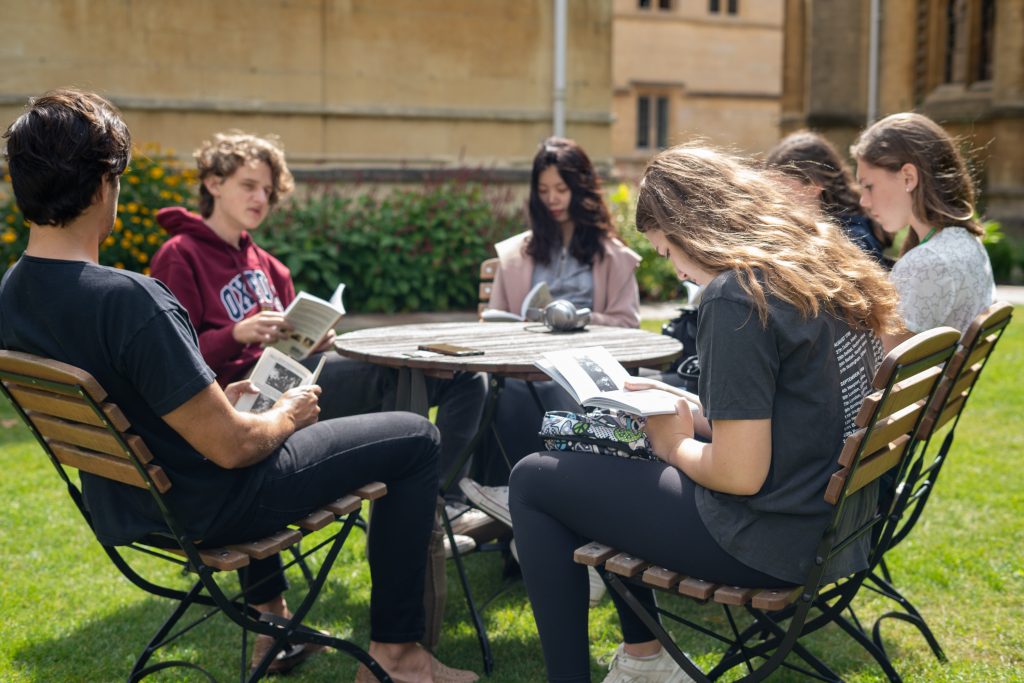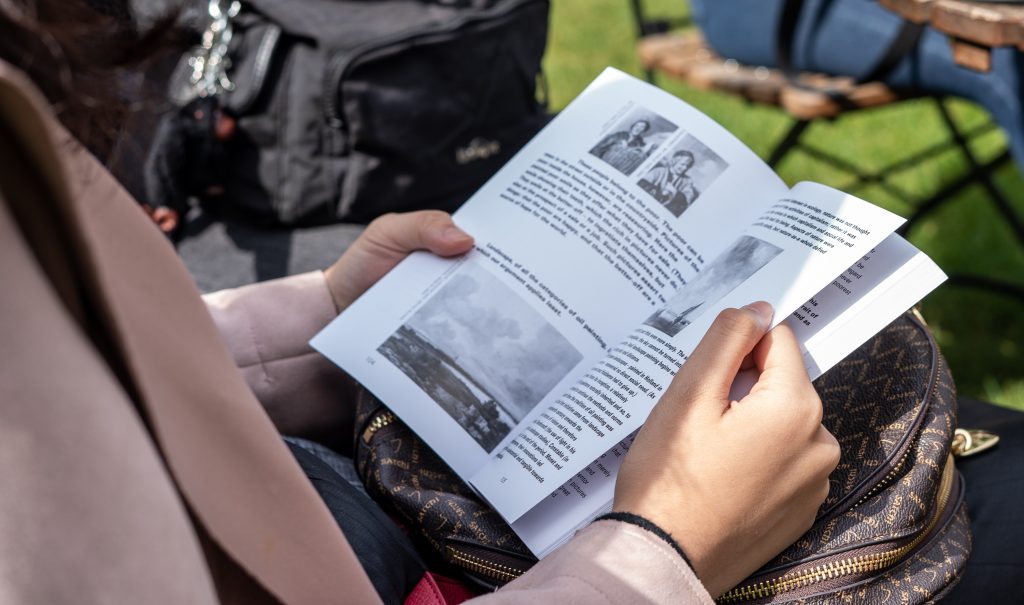Art History spent the first half of our class session in the university Fellows’ Garden reading chapters 4 and 5 from John Berger’s British art criticism book, Ways of Seeing. In this seminal 1972 publication, Berger deconstructs the normalized ways in which the average art viewer “sees” works of art. He discusses the tradition of oil painting in Europe throughout the early modern periods, and how the medium’s ability to articulate the tangibility of the natural world became a perfect tool for the burgeoning merchant class to show off its wealth. Berger tells us that oil painting’s rise was contemporaneous with the rise of capitalism, and he argues that the central aim of oil painting was to depict the philosophical system of capitalism. Within that philosophical system, the world, and all within it, is reduced to property. Oil paintings, which were commissioned by the ruling classes, were tasked with the purpose of reflecting that class’s power to own and to possess. For Berger, this central aim was the catalyst for the technical development of perspective and tangible realism within the practice of oil painting.

In the second half of our session we visited the Ashmolean Museum, an art and archaeology museum established in 1677 from Elias Ashmole’s personal “collection of curiosities.” The students learned about the philosophical rationale behind collecting during the Enlightenment and how modern museums were born from that tradition. We then visited various galleries that help explain the complex trajectories that people, religions, natural resources, and objects have taken throughout the world for millennia. Today, our class primarily focused on European colonial projects in the 17th and 18th centuries and how they influenced wealth, taste, and painting conventions of the time. For example, the Chinese porcelain bowls on view in the second floor galleries were also found in the sumptuous still life paintings overflowing with exotic fruits on the 4th floor. John Berger’s thesis was easily seen and illustrated in the wonderful collections at the Ashmolean.
— Adam & the Art History seminar


